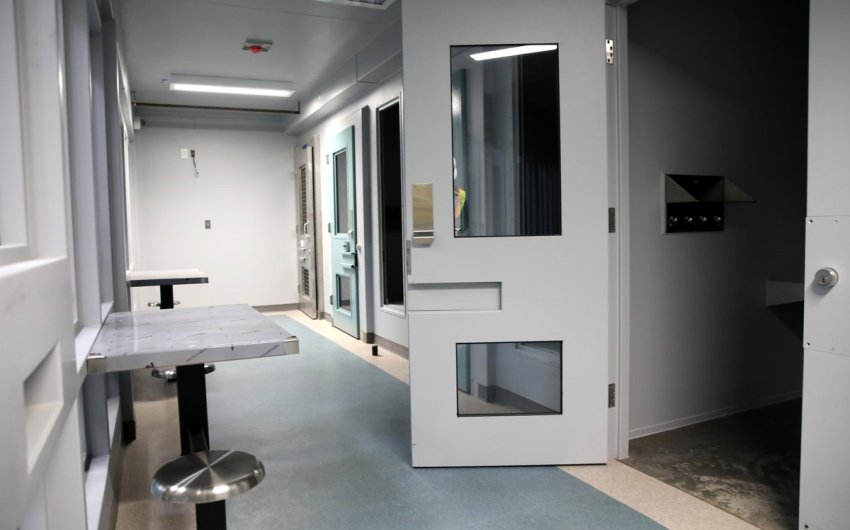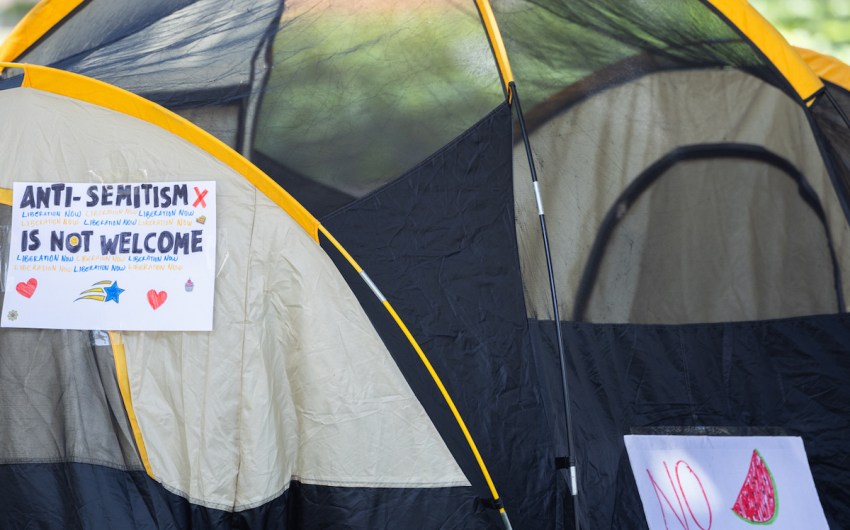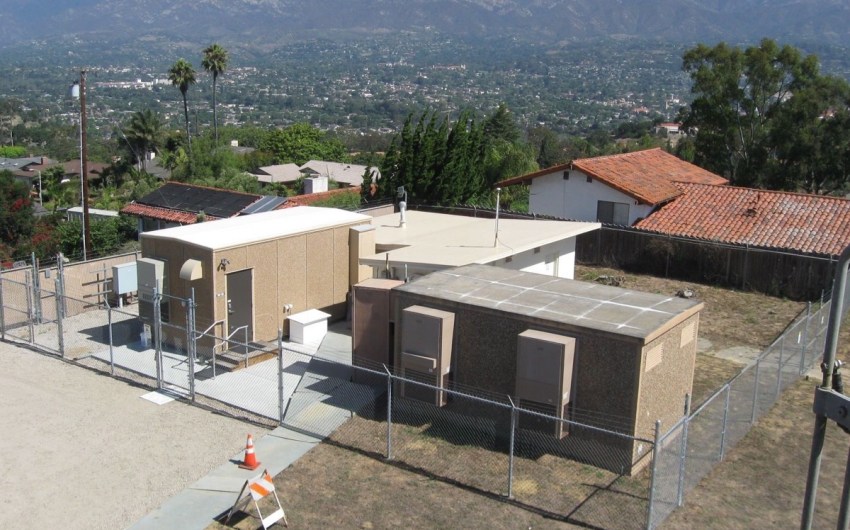Rattlesnake Season Strikes Fear in Santa Barbara Backyards
As Temperatures Rise, Residents Turn to Expert for Safe Snake Removals and Relocations

A gentle rattle, hissing tongue, and neatly coiled body of a rattlesnake is one of the last sights Santa Barbara residents would like to see in their backyards. But, like it or not, rattlesnake season is about to be underway, and sightings are picking up as the temperature rises and our scaly friends wriggle out of hibernation.
Instead of screaming and running, Dr. Emily Taylor would rather you call her Central Coast Snake Services (CCSS). A biology professor at Cal Poly San Luis Obispo with more than 25 years of experience researching rattlesnakes, Taylor began her rattlesnake collection and relocation service in 2019. CCSS offers the free removal and relocation of rattlesnakes in Santa Barbara, Goleta, Montecito, Carpinteria, and San Luis Obispo County.
Kathleen Glenn, who lives close to Mountain View Elementary School off Cathedral Oaks Road, called Taylor’s CCSS service to remove a rattlesnake in March last year. She says that her husband discovered the snake coiled up in their shed about six inches from where he’d grabbed the trimmers minutes before.
In a flurry, Glenn remembered her neighbor calling the CCSS service to remove a rattlesnake they found on their porch, so she hopped on the phone and dialed the CCSS number. The voice over the line said someone was nearby and would be there shortly. Glenn shut the shed door just to be safe, and Samantha Lewis, a technician with CCSS, arrived not long after, a petite woman equipped with a three-foot-long snake-grabber and a five-gallon bucket.
According to Glenn, Lewis gently placed the rattlesnake in her bucket from a safe distance. A retired math teacher, Glenn did some quick mental math judging by the number of coils in the five-gallon bucket, and estimated the snake’s length to be 39 inches long.
A dark brown-black color, the snake was likely a Southern Pacific rattlesnake, which can range from 30-50 inches long and are common in the Santa Barbara area.
Once the snakes are evacuated, CCSS relocates them a quarter- to a half-mile away. Although this may sound not far enough to most people, Taylor describes this distance as a “sweet spot.”
“It’s far enough that they don’t normally come back, but it’s close enough they still know the area and aren’t killed by predators,” Taylor said in an interview with the Independent. “They have patterns on their backs that are unique like a fingerprint, and we take a photo of almost every snake we remove, so we know that they rarely come back.”
Although Taylor says that rattlesnakes can be sighted year-round because of the mild California weather, she says that sightings tend to pick up from April to October. But the weather is not the only factor that contributes to central California’s outstanding snake hospitality.

“For Santa Barbara in particular, the way neighborhoods are built next to large nature preserves in the hills or through the dry canyons make it so that people encounter more snakes,” said Taylor. “People in houses down by water or in the city are less likely to see them.”
Denise McDonald, the director of the emergency department at Santa Barbara Cottage Hospital, says that if someone gets bitten by a rattlesnake, the first thing they should do is remain calm.
“Stay as calm as you can, don’t put ice on it, don’t suck the venom out, and whatever you do, don’t try and catch the snake,” she said. “The ER can tell which kind of snake it was by the bite and the symptoms. We have plenty of anti-venom.”
McDonald says that the faster someone gets to the ER, the better, but that the bites don’t tend to kill someone. It’s normally the pain that is insufferable.
“It’s the pain and, actually, the swelling that tend to be some of the biggest problems for people who get bit,” said McDonald. “Arms and legs don’t have a lot of room for swelling, so sometimes the threat of losing a limb, if someone isn’t seen as soon as possible, is what makes a bite fatal, not the venom.”
Santa Barbara Cottage Hospital has seen a total of seven patients with snake bites this year, which is seven more than they’d seen last year by May. In 2023, Cottage Hospital saw only a total of two patients with snake bites, both in June, and after the season for rattlesnakes had started. She says it’s going to be a tough year for snake bites, and that the community needs to be careful.
“I just want to let people know that they are out there this year, and bigger than ever,” said McDonald. “We had a wet and cold winter, so they’re coming out to enjoy the heat, but we’re going into their turf and their telling us they don’t like us here.”
To dissuade these unwelcome visitors and decrease the risk of a bite, Taylor advises residents to remove “low shade” areas in the backyard that the snakes use for shelter and shade during the spring and summer.
The CCSS website gives examples, such as mid-sized shrubs, piles of wood, rocks, and tall grass. She also writes that snakes have exceptional memories and if they have a water or food source, like a leaking hose faucet or bird feeder, they’ll “come back for more.” So it’s best to get rid of those too.
After Glenn’s encounter with the Southern Pacific rattlesnake, she summarized the situation well. “I would hate to think that the CCSS kill them,” she said before she knew they were relocated. “Snakes are just doing what nature tells them to do: find a cozy spot stay warm and curl up. I just want them to do that somewhere else.”
4-1-1: To contact Central Coast Snake Services, South Coast residents should text or call the 24-hour snake hotline at (805) 401-0811, along with a photo of the snake, to verify it’s a rattlesnake.
Correction: An earlier version of this story repeated the old wives’ tale that the bite of a baby rattlesnake is deadlier than an adult’s. Taylor stated bites from an adult are more severe than a baby’s, and both are dangerously venomous.
Premier Events
Tue, May 21
7:00 PM
Santa Barbara
Revisiting the Classics: “Schmigadoon!”
Thu, May 23
7:00 PM
Carpinteria
The Carpinteria High School Muses Present “The Wizard of Oz” Musical
Fri, May 24
11:00 AM
Santa Barbara
Discussion: Misogyny, Racism & Violence at UCSB: The IV Killings 10 Years Later
Fri, May 24
7:00 PM
Santa Barbara
SBHS Annual Spring Dance Concert 2024
Sat, May 25
3:00 PM
Santa Barbara
Canary Hotel Rooftop: Suns Out Buns out with LeFunk Sounds
Sat, May 25
8:00 PM
Carpinteria
Rich Tell Presents: The Thom Rotella Band
Sun, May 26
11:00 AM
93103, Santa Barbara, CA
Memorial Day Weekender PJ Brunch!
Sun, May 26
12:00 PM
Santa Barbara
Market at Pali Wine Co
Mon, May 27
11:00 AM
Santa Barbara
PCVF Memorial Day Ceremony
Wed, May 29
7:00 PM
Santa Barbara
One Night Only San Marcos H.S. Jazz
Tue, May 21 7:00 PM
Santa Barbara
Revisiting the Classics: “Schmigadoon!”
Thu, May 23 7:00 PM
Carpinteria
The Carpinteria High School Muses Present “The Wizard of Oz” Musical
Fri, May 24 11:00 AM
Santa Barbara
Discussion: Misogyny, Racism & Violence at UCSB: The IV Killings 10 Years Later
Fri, May 24 7:00 PM
Santa Barbara
SBHS Annual Spring Dance Concert 2024
Sat, May 25 3:00 PM
Santa Barbara
Canary Hotel Rooftop: Suns Out Buns out with LeFunk Sounds
Sat, May 25 8:00 PM
Carpinteria
Rich Tell Presents: The Thom Rotella Band
Sun, May 26 11:00 AM
93103, Santa Barbara, CA
Memorial Day Weekender PJ Brunch!
Sun, May 26 12:00 PM
Santa Barbara
Market at Pali Wine Co
Mon, May 27 11:00 AM
Santa Barbara
PCVF Memorial Day Ceremony
Wed, May 29 7:00 PM
Santa Barbara





















You must be logged in to post a comment.